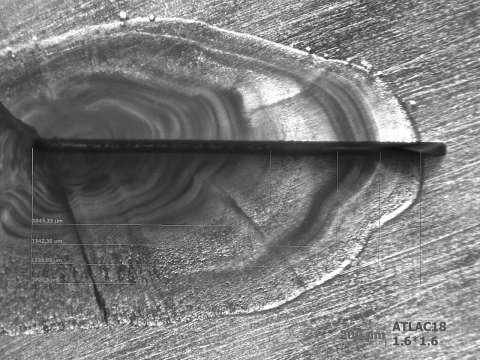
Life history of the Small Sandeel, Ammodytes tobianus, inferred from otolith microchemistry. A methodological approach. F. Laugier, E. Feunteun, C. Pecheyran, A. Carpentier. Estuarine, Coastal and shelf science (2015), doi: 10.1016/j.ecss.2015.05.022
Knowledge of life history and connectivity between essential ecological habitats are relevant for conservation and management of species and some natural tracers could be used to study the lifecycles of small or short-lived marine fishes. Although sandeels are central in marine food webs and are key species, there is incomplete knowledge about population mixing and migration patterns.
For the first time the use of the otolith microchemistry on sandeel species is evaluated in the case of the Small Sandeel. Variations in microchemical fingerprints of 13 trace elements are performed with a Femtosecond LA-ICPM from the core to the margin of sagittal otolith and are compared within and between otoliths extracted from 34 fishes sampled in three different sites along the coast of the south-western English Channel in France. Firstly, preliminary investigations on the validity of the method revealed that Mg/Ca was the only ratio significantly dependant on fish ontogeny and sampling season. Secondly, the Mn/Ca, Zn/Ca, and Cu/Ca ratios enabled us to significantly discriminate among sampling sites. Thirdly, microchemical fingerprints of each life stage varied significantly among sampling sites but not within them, suggesting high site fidelity over relatively short distances. Finally, the fingerprints of all life stages were significantly different from those of the larval and metamorphosis stages. The otolith microchemistry could detect change of signature relative to the shift from a pelagic behaviour to a resident bentho-pelagic behaviour during the middle of the juvenile stage in Small Sandeels.
Hence, analysis of trace element fingerprints in otoliths appears to be a valuable method to further studies on ontogenic habitat change, population mixing and variation of life history and be helpful for the management at local or regional scales of short-lived species such as those belonging to other Ammodytidae.

